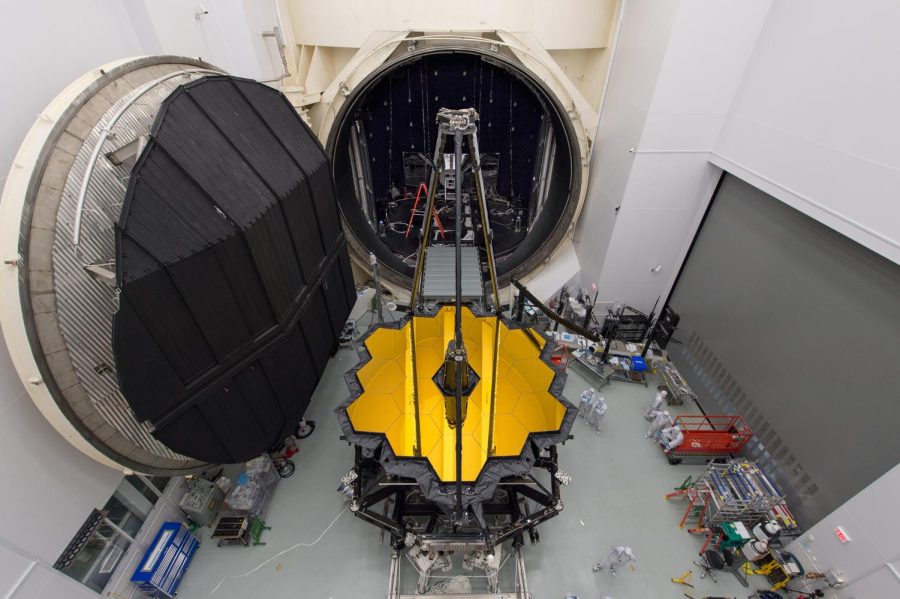Anybody Out There? The James Webb Telescope Helps Narrow Search for Extraterrestrial Life
The James Webb telescope has discovered carbon dioxide on a faraway exoplanet, the first time the substance has been detected outside our solar system.
Used with permission from NASA/Desiree Stove
James Webb Telescope. Scientists ready the telescope for testing in a giant thermal vacuum chamber. It must be able to function in extreme low temperatures to detect Infared light.
September 10, 2022
The scientific community of Earth is buzzing with excitement over the James Webb Telescope’s recent discovery of carbon dioxide on a distant exo-planet, WASP-39b.
The telescope’s photos may leave the average person in awe, but the magnitude of its ground-breaking scientific discoveries has thus far gone slightly under the radar.
Carbon dioxide is a gas abundant on our planet, but it’s never been discovered outside of our solar system until now.
“From a science standpoint, [the discovery of carbon dioxide is] extremely exciting,” said Jonathan Fortney, Director of the Other Worlds Laboratory at University of California Santa Cruz (UCSC), in a recent interview with Scientific American.
The exo-planet in question, WASP-39b, has long been a point of scientific curiosity. Slightly wider than Jupiter and far hotter than Mercury, the planet WASP-39b, nicknamed “Hot Jupiter,” had produced some data that hinted at the existence of carbon dioxide, but it wasn’t enough.
Now, the Webb telescope has finally found solid evidence.
“That’s where the story starts to get interesting,” said Natalie Batalha, the leader of Webb’s Transiting Exoplanet Early Release Science team, in a recent interview with Scientific American.
The reason this discovery is so important is because it shows just how capable the telescope really is.
One of the many reasons the U.S. launched the James Webb telescope into space was to find traces of life on other planets. The telescope observes a planet’s atmosphere and studies light as it pierces through the different gases. Since each kind of gas absorbs a different wavelength of light, the telescope can tell them apart. Scientists have never had a scientific tool to tell the difference between various substances found on other planets until now.
Carbon dioxide is one of the most important gasses on Earth, with almost all living things relying on it for energy or reproduction. It’s one of the most important ingredients for life.
Sadly, WASP-39b is definitely too close to its star to support living things.
“[WASP-39b] is halfway to a good biosignature,” said Jessie Christiansen, an astronomer at NASA, also in an interview with Scientific American.
Any combination of methane and carbon dioxide is considered an indicator of life, but the exoplanet doesn’t contain enough methane. But there is a bright side! Thanks to this assist from the Webb telescope, scientists and astronomers now have a better idea of what they’re searching for in the quest to discover other habitable worlds. With so many planets out there, anything that narrows the search down helps scientists greatly.
Some scientists think that extraterrestrial life will be discovered by a telescope even more powerful than the Webb telescope, and the Webb telescope is ultimately paving the way for these future scientific discoveries.
With this telescope, we’re one step closer to finding our neighbors in this vast universe.





